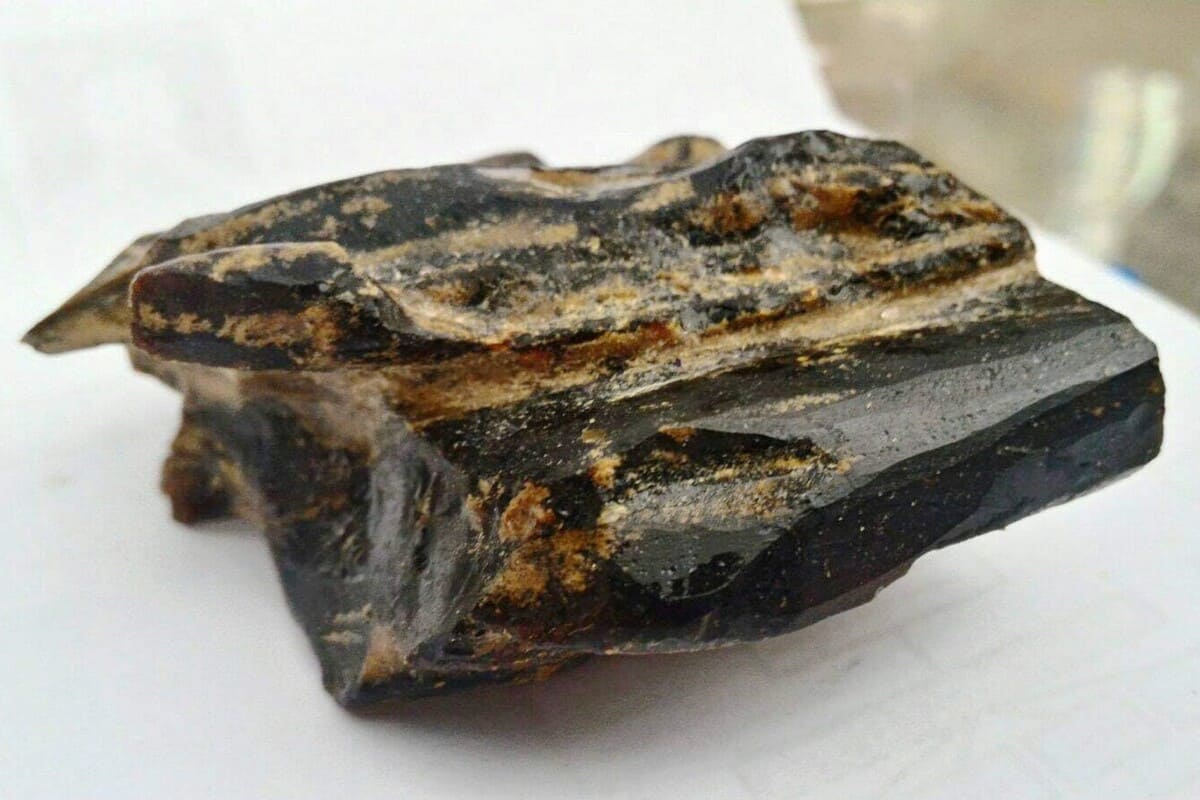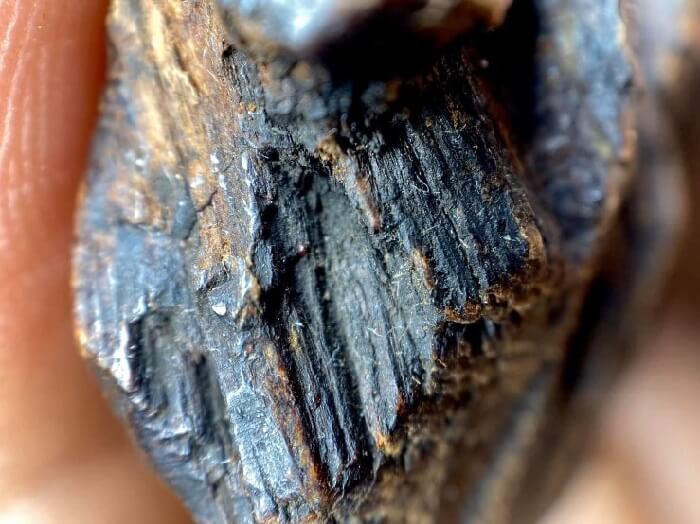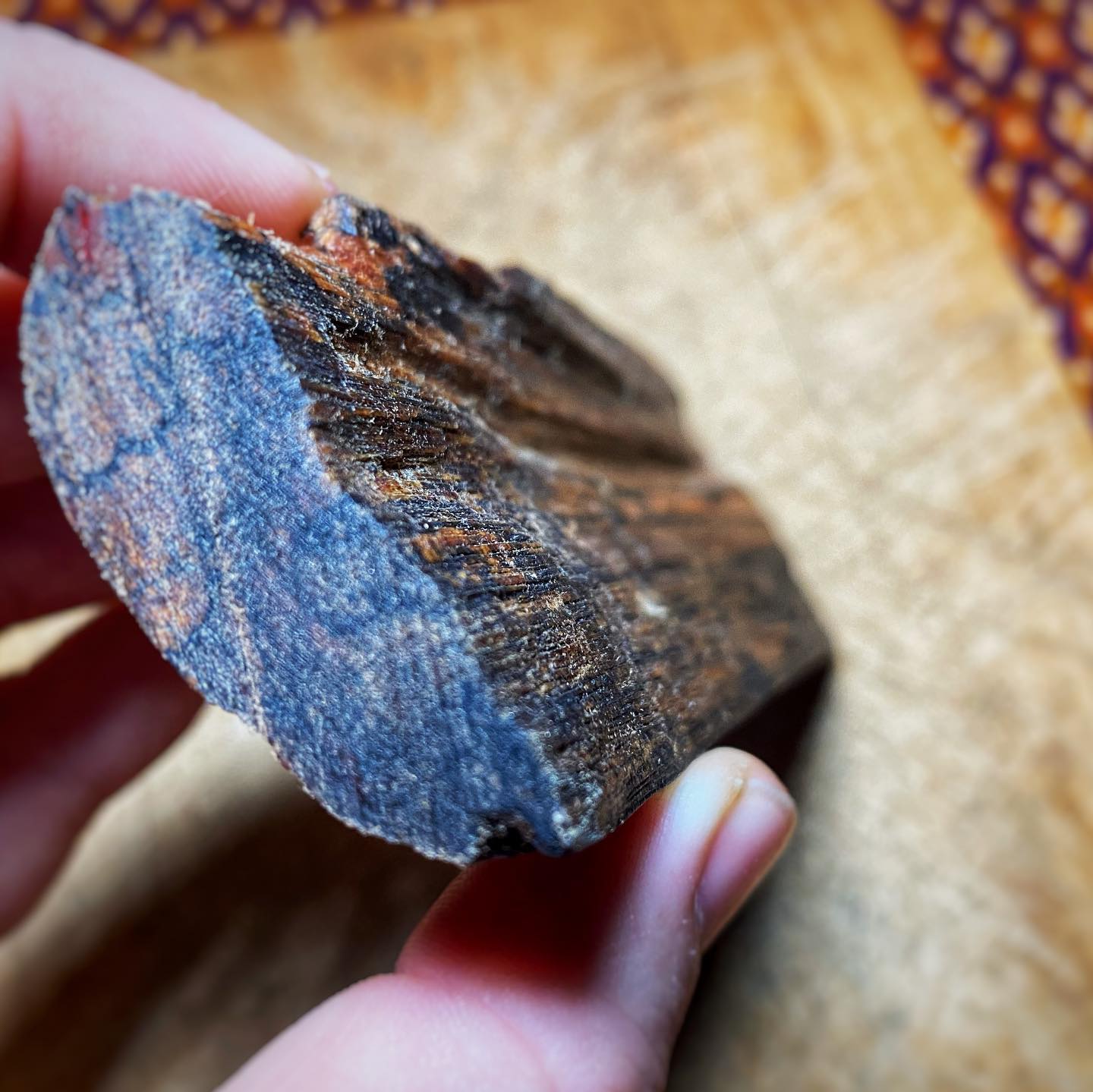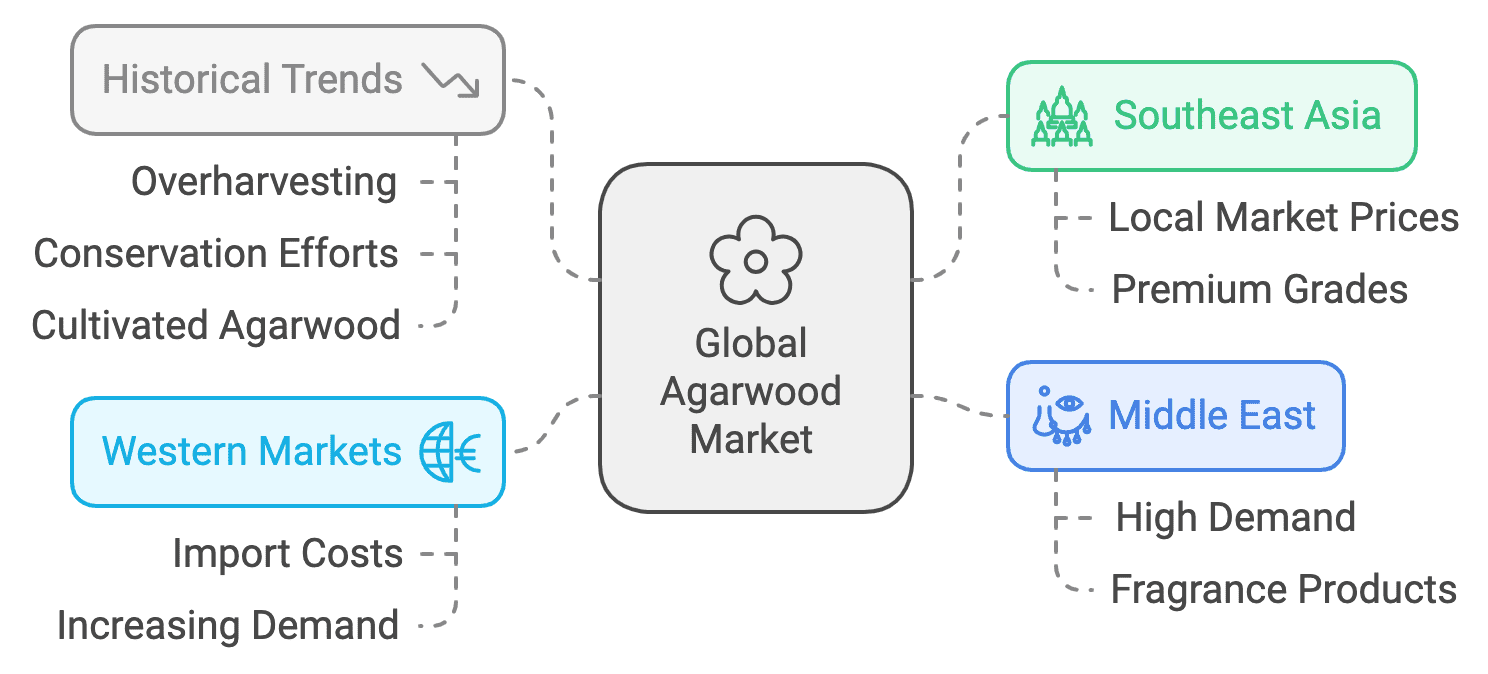
Introduction
Table of Contents
ToggleAgarwood, known for its rich aroma and cultural significance, is one of the most valuable woods in the world. Understanding the agarwood price is crucial for buyers, investors, and enthusiasts alike. The market for agarwood is complex, with prices varying significantly based on a multitude of factors.
To understand the broader agarwood industry landscape, refer to our comprehensive overview. This article delves into the intricacies of the agarwood price per kg, the elements that influence it, and current agarwood market trends.
Understanding Agarwood Pricing
What Determines Agarwood Price Per Kg?
The agarwood price per kg is determined by several key factors. The rarity of high-quality agarwood makes it a precious commodity. Demand for 1 kg agarwood price can reach thousands of dollars, primarily due to its use in luxury perfumes, traditional medicines, and religious ceremonies.
The interplay between supply and demand heavily influences the agarwood cost per kg. This scarcity increases prices and pushes the market towards sustainable sources. Additionally, adhering to legal issues and regulations ensures a stable and ethical market.

Types and Grades of Agarwood
Agarwood is categorized into multiple grades, each determined by its quality. The grading system usually spans from Super grade to A, B, and C, with higher grades reflecting a greater concentration of resin, richer fragrance, and increased density—factors that significantly influence pricing.
For example, Super grade agarwood, known for its unparalleled quality, fetches a premium price per kilogram. Understanding the agarwood price begins with knowing what agarwood is and its value in various applications.

Forms of Agarwood Products
Agarwood is available in multiple forms, including wood chips, oil, incense, and beads. The agarwood cost varies depending on the form. Raw agarwood chips may be less expensive per kilogram compared to processed products like oud oil, which requires extensive extraction processes. These variations influence the overall agarwood price in the market.

Factors Affecting Agarwood Price
Geographic Origin
The origin of agarwood significantly affects its price. Major agarwood-producing countries include Vietnam, Cambodia, and Malaysia. Agarwood from these regions is renowned for its high resin quality. The agarwood price per kg from these areas is often higher due to the superior fragrance profiles and cultural value attributed to them.
Resin Content and Quality
Resin content is a crucial determinant of the agarwood price. Higher resin concentration means a more potent aroma and better quality. Methods such as sinking tests and visual inspections assess resin content. A high resin content elevates the agarwood cost per kg, reflecting its premium status in the market.

Wild vs. Cultivated Agarwood
Wild-harvested agarwood, prized for its rarity and superior quality, commands significantly higher prices due to its scarcity. However, growing sustainability concerns have led to a shift toward cultivated agarwood. Although plantation-grown varieties are more affordable, advancements in cultivation techniques are steadily enhancing their quality, making them a viable and eco-friendly alternative.
Harvesting and Processing Techniques
Traditional harvesting methods are labor-intensive and time-consuming, impacting the agarwood price. Modern techniques aim to induce resin production more efficiently. The processing method, whether it’s for raw wood or distilled oil, also affects the 1 kg agarwood price due to varying production costs. For example, “the production process of oud oil impacts its pricing in the luxury fragrance market.”
Market Demand and Trends
Current agarwood market trends show a growing demand in industries like perfumery and traditional medicine. As demand increases, so does the agarwood price per kg. The global fascination with natural and luxury products fuels this demand, influencing market dynamics.

Agarwood Price Per Kg in Global Markets
Price Variations by Region
Southeast Asia
In Southeast Asia, the heartland of agarwood production, the agarwood price per kg varies widely. Local markets may offer lower prices due to reduced transportation and export costs. However, premium grades still command high prices domestically.
Middle East
The Middle East has a deep-rooted cultural affinity for agarwood, particularly in the form of oud oil. The 1 kg agarwood price in this region is significantly higher, driven by strong demand for high-quality fragrance products.
Western Markets
Emerging interest in agarwood in Western countries affects global agarwood market trends. Import costs, coupled with increasing demand, elevate the agarwood cost per kg in these markets.
Historical Price Trends
Historically, the agarwood price has seen substantial fluctuations. In the past few decades, overharvesting led to scarcity, driving prices up. Conservation efforts and the introduction of cultivated agarwood have since influenced price stabilization, though high-quality wild agarwood remains expensive.

Investing in Agarwood
Agarwood as an Investment Commodity
Agarwood presents an attractive investment opportunity due to its high value and consistent demand. Investors are drawn to the potential for significant returns, especially with premium grades where the 1 kg agarwood price can be exceedingly high.
Factors to Consider
Investors must consider authenticity verification to avoid counterfeit products that could diminish returns. Understanding agarwood market trends and demand cycles is crucial. Additionally, being aware of legal considerations, such as export regulations, ensures compliance and protects the investment. New investors should focus on building relationships, understanding regulatory requirements, and staying informed about guide to buying quality agarwood.


Future Outlook on Agarwood Pricing
Sustainability and Conservation Efforts
Overharvesting has endangered natural agarwood populations. Sustainability initiatives, including responsible farming and harvesting practices, aim to balance supply with conservation. These efforts may stabilize or even reduce the agarwood price per kg over time, as sustainable sources become more prevalent.
Technological Innovations
Advancements in agarwood cultivation, such as inoculation techniques to induce resin production, could impact future pricing. Improved methods may increase supply, potentially lowering the agarwood cost per kg and making it more accessible. Understanding preservation techniques can help maintain agarwood quality, which is a crucial factor in determining its price.
Changing Market Dynamics
New markets are emerging as awareness of agarwood grows. Changes in consumer preferences towards natural and exotic products influence agarwood market trends. These dynamics could lead to increased demand, affecting the agarwood price globally.

Tips for Buyers
How to Navigate Agarwood Prices
To make informed purchases, buyers should research current agarwood price per kg across different regions and suppliers. Comparing prices helps identify fair market values and avoid overpaying.
Identifying Genuine Agarwood
Authenticity is paramount. Buyers should look for signs of genuine agarwood, such as natural resin patterns and rich aroma. Purchasing from reputable sellers reduces the risk of counterfeit products, which can affect both quality and investment value.
Negotiating and Purchasing
Building relationships with trusted suppliers can lead to better pricing and access to higher-grade products. Negotiating the agarwood cost per kg is more feasible when dealing directly with producers or established dealers. Understanding the market enables buyers to make strategic decisions.
Conclusion
The world of agarwood is as complex as it is fascinating. Numerous factors, including quality, origin, market demand, and legal regulations, influence the agarwood price. For buyers and investors, understanding these elements is essential to navigate the market effectively. As agarwood market trends evolve, staying informed will be crucial for making sound purchasing decisions. The future of agarwood pricing will likely be shaped by sustainability efforts, technological advancements, and shifting consumer preferences, all of which hold the potential to redefine the market landscape.
FAQs
1. What factors influence the price of agarwood per kilogram?
The price of agarwood per kilogram is influenced by factors such as resin content, quality grade, geographic origin, and whether it is wild or cultivated. High-quality agarwood with a rich aroma, often found in regions like Vietnam and Cambodia, commands higher prices. Market demand, legal regulations, and harvesting methods also impact the price.
2. How does the grading system affect the cost of agarwood?
Agarwood is graded from Super grade down to lower grades (A, B, C), with each grade reflecting the quality, resin concentration, and aroma richness. Higher-grade agarwood has more resin and a stronger fragrance, making it more expensive per kilogram compared to lower-grade varieties.
3. What is the difference in price between wild and cultivated agarwood?
Wild agarwood is rarer and often considered superior, leading to a higher price per kilogram due to its scarcity. In contrast, cultivated agarwood is generally more affordable, as sustainable plantation methods increase supply. However, advances in cultivation techniques have improved the quality of plantation-grown agarwood, narrowing the price gap.
4. How has the global demand for agarwood affected its price?
High demand in regions like the Middle East, East Asia, and parts of the Western world has driven up the price of agarwood. Increased interest in natural fragrances and traditional wellness products has fueled market growth, leading to higher prices and the need for sustainable sourcing to meet demand responsibly.
5. What should buyers consider when purchasing agarwood to ensure quality and authenticity?
Buyers should verify the origin, grade, and resin content of the agarwood. Purchasing from reputable sellers and checking for authenticity certificates can help avoid counterfeit products. Buyers should also research current market prices to gauge fair pricing and consider building relationships with trusted suppliers to access high-quality agarwood.
Author
Pham Thi Mai Huong is the Sales Director of Oudgo, responsible for managing the sales team, developing relationships with customers, and establishing strategic partnerships. She holds a Bachelor’s degree in Business Administration from Ho Chi Minh City University of Economics and brings over twelve years of experience in sales and market development. Prior to joining Oudgo.Ms. Huong worked with companies specializing in the export and distribution of premium products, where she developed expertise in expanding market reach and driving sales growth. Her leadership and strategic approach have been key in enhancing Oudgo’s sales performance and strengthening its presence in the market see more

